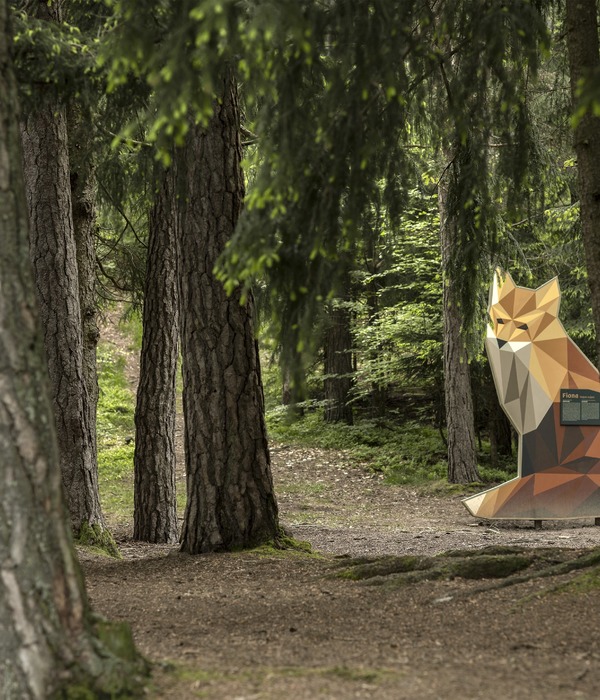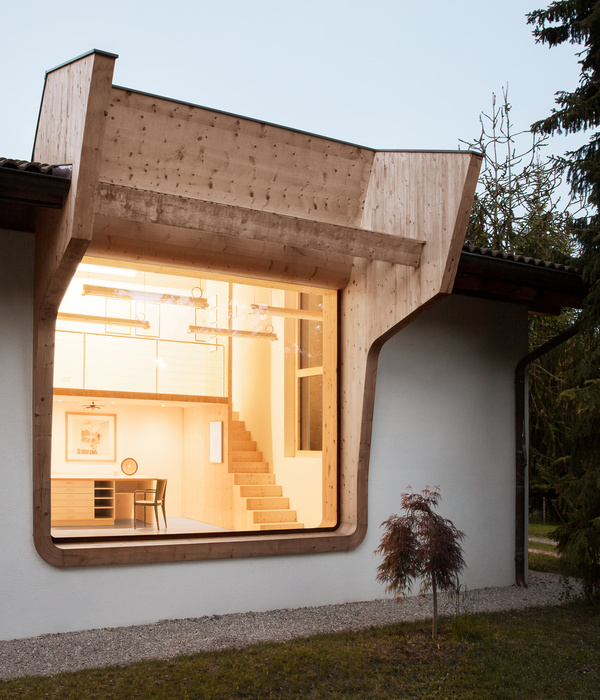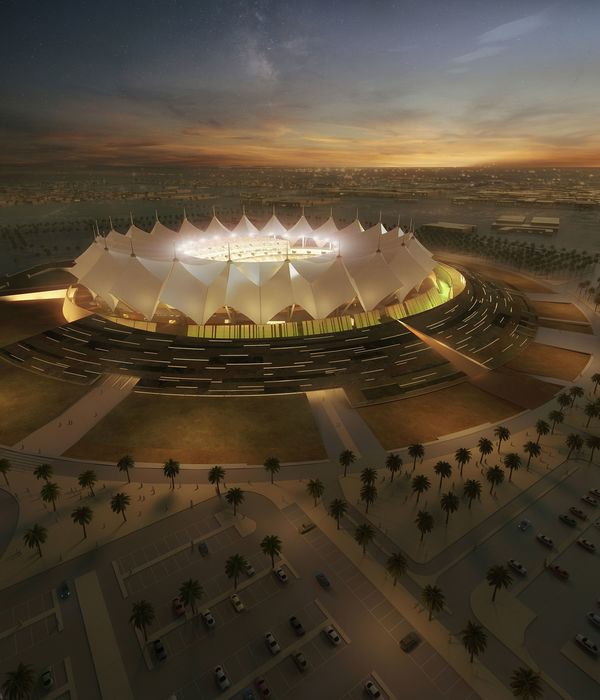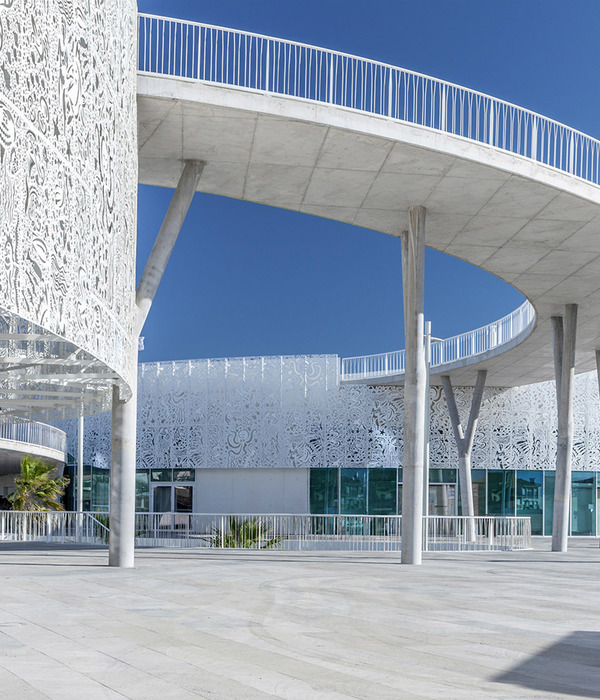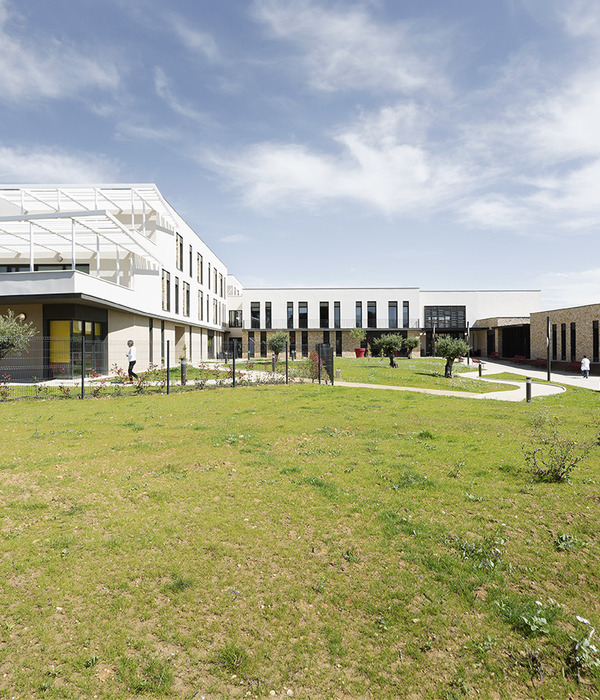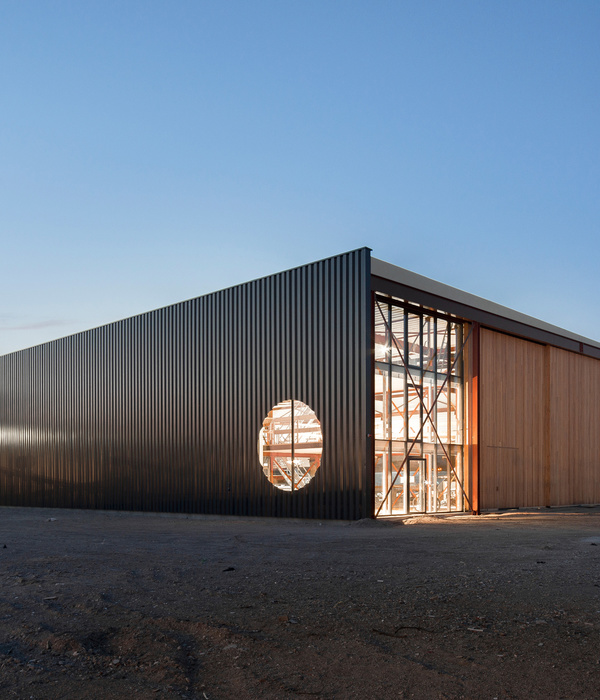花房驿站为“2021上海城市空间艺术季”徐汇区“花开蒲汇塘”展场的主展馆。基地位于钦州路田林东路地块,毗邻徐汇区重要的水脉蒲汇塘。原址为在城市更新中需要拆除的花鸟市场,未来将建成绿地公园。
▼驿站秋景,Autumn scenery ©樊婕
花房驿站的建设成为地块整体更新的先导,为传统社区注入“绿色、艺术、共建”的理念。在有限的预算、有限的用地和有限的工期的前提下,花房驿站设计确定了建筑、结构、空间、材料、构造一体化设计的策略,最终成功在各部门的通力协作下完成了109天极速搭建。
The Flower Station is a forerunner in the comprehensive regeneration of the site, introducing the notion of “green, art, and co-building” into the traditional neighborhood. Under the premise of limited budget, limited land area and limited construction period, the design adopted a strategy of integrating architecture, structure, space, material and structure and was successfully constructed in 109 days with the collaboration of all departments.
▼艺术季期间的使用,during the art season ©樊婕
考虑到艺术季期间和远期运营的弹性使用诉求,我们对于花房的原型进行研究,吸取了传统温室花房的经济高效结构特点,演绎出核心体量+空间网架的结构体系,形成大跨度的空间模式,营造出轻盈开敞的空间效果,呈现了外向的、迎接性的建筑姿态。
Considering the varied demands throughout the art season as well as long-term operation, we investigated the prototype of greenhouse, extracted the economically and structurally effective structural aspects of the conventional greenhouse, and designed a structural system of Core Volume + Space Truss. The long-span space endows the community with a bright and open spatial atmosphere, exhibiting an outward and inviting architectural form.
▼空间网架,Space Truss ©樊婕
▼核心体量,Core Volume ©樊婕
支撑体系采用格构柱,消减了柱子的体量感,增加了视觉层次,与空间网架结合形成精致的构造节点,带有编织感的钢结构与通透开敞的空间相得益彰,钢结构本身成为建筑重要特色,同时节省了二次装修的时间和经济成本。
The support system employs the lattice columns which minimizes the volume while enriching the visual hierarchy, and integrates with the space truss to form delicate architectural details. The weaving steel structural framework compliments the bright and open space, and stands out as a highlight element of the space, which shortening the construction period and saving the budget for interior decoration.
▼编织感的钢结构,The weaving steel structural framework ©同济原作设计工作室
▼结构贯通至室内,The structure runs through the interior ©樊婕
室内室外空间一体化,底层空间在关键处设置灵活的折叠门,原本有限的室内空间得以蔓延到大空间中,让人们在使用上不再局限于固定的建筑边界,而是真正从活动与展览的呈现效果出发,与建筑形成有机的互动。
The indoor and outdoor spaces are integrated, and movable folding doors are outfitted at crucial places on the ground floor. The originally bounded indoor space may now envelope into the open environment, allowing people to engage with the space organically rather of being constrained to the set boundaries of the structure.
▼“空间一体化&立体漫游路径”设计, Diagram of Integrated space & Spatial roaming path ©同济原作设计工作室
▼空间一体化&立体漫游路径, Integrated space & Spatial roaming path ©樊婕
立体漫游路径的设置模糊了室内外关系与层间关系,结合楼梯设置了不同标高的平台,让人们可以在屋内屋外自由穿梭,从底层可以漫游至屋顶平台,为布展提供了多样化的流线。
The spatial roaming path resolves the differences between the indoor and outdoor, as well as between floors, and generates platforms at varying elevations with staircases, allowing people to freely wander through the indoor and outdoor environments. People may walk freely from the ground level to the roof terrace, generating a variety of circulations for exhibitions.
▼空间一体化&立体漫游路径, Integrated space & Spatial roaming path ©左:樊婕,右:同济原作设计工作室
建筑材料以钢结构、铝板、玻璃为主,强化轻盈现代的感受,色彩选择统一的低饱和度的自然绿色,让人们在空间中产生整体性的空间感受。
To reinforce the sensation of lightness and modernism, the construction materials are mostly steel framework, aluminum plate, and glass, and the colors are selected to be consistent low-saturation natural green to offer a holistic spatial experience in the space.
▼在屋架下, Under the roof ©樊婕
细部上,结构体系与照明系统和遮阳系统一体化设计,为各类活动与建筑空间的互动提供了适宜的氛围。在艺术季期间可根据艺术活动的媒体形式进行调整,为远期使用者的需求保有了灵活度。
In terms of its details, the structural system is integrated with the lighting and shading systems to provide a hospitable environment for the diverse activities. It may also be tailored to the media demand of art events throughout the art season, remaining adaptable to the needs of long-term users.
▼屋顶节点,detail design of roof ©同济原作设计工作室
▼结构体系与照明系统和遮阳系统一体化设计,The structural system is integrated with the lighting and shading systems ©樊婕
花房驿站的建成将各类活动带入社区,外向型的空间模式吸引老百姓体验生活周边的新事件与新精神,在使用中体验到随机性与诗意;建筑整体呈现出的与使用者对话的姿态,进一步加强了社区认同感与归属感。
The Flower Station may bring a variety of activities into the community, and the welcoming and intriguing space draws people in to experience events and spirits, as well as randomness and poetry. The architectural form encourages users to interact with it, enhancing the sense of community identification and belonging.
▼驿站夜景,Night view ©樊婕
艺术季的举办为花房驿站注入了事件性的特征,艺术季期间沙龙、展览、休憩的功能未来将被养花、观花、买花、聚会、喝茶等不断涌现的新的诉求所取代,设计留有创造性的空间,更需要社区居民和运营者在此基础上的协作与共同努力,“花开蒲汇塘”,花房驿站将成为蒲汇塘畔新的文化艺术与市民生活聚集点。
The art season has endowed the flower house station an episodic tone, and the functions of salon, exhibition, and relaxation during the art season will be replaced in the future by new demands such as raising flowers, appreciating flowers, buying flowers, gathering and drinking tea. On this premise, the design offers opportunity for innovation and necessitates the participation and collaborative efforts of the community’s inhabitants and operators. The Flower Station will become a new meeting place for culture, art, and civic life on the riverside of Flowering Puhuitang.
▼平面图,Plans ©同济原作设计工作室
▼立面图,Elevations ©同济原作设计工作室
▼项目更多图片
{{item.text_origin}}

